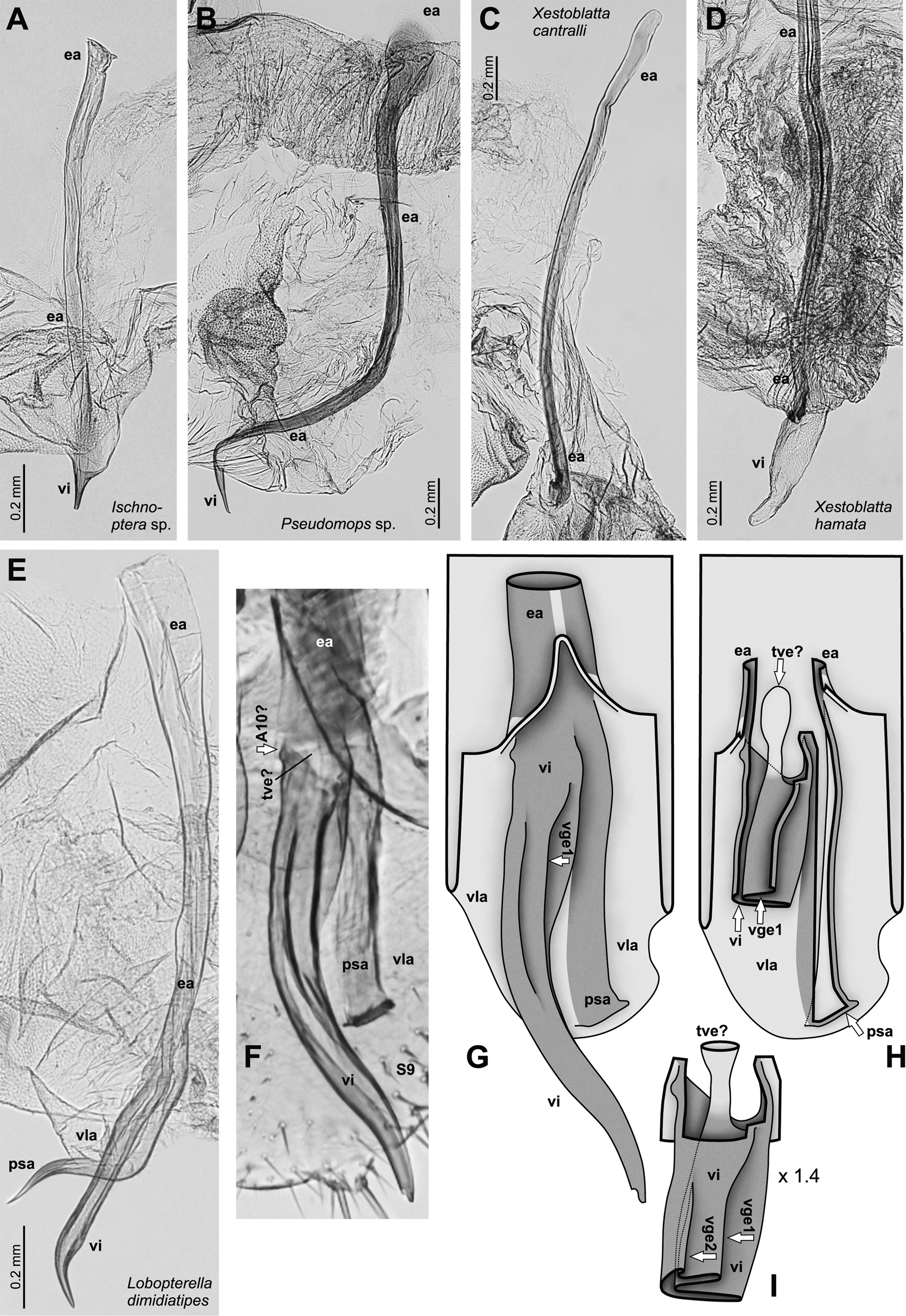
|
||
|
Endophallic apodeme and associated processes of Attaphila and several other Blattellidae species. A: Ischnoptera sp. (CR 13, ex cult.). B: Pseudomops sp. (Mexico, Bo 1454). C: Xestoblatta cantralli (CR 15/1). D: Xestoblatta hamata (CR 9/1). E: Lobopterella dimidiatipes (ex cult.). F–I: Attaphila aptera, photograph (F, taken from Fig. 24A) and tentative reconstruction drawings (G complete; H with dorsal parts cut off; I: proximal part of virga cut out); all included sclerotisations belong to main sclerite L2; identification of element tve tentative; F–H at same scale, I 1.4× ― Abbreviations: A10? possible articulation at base of virga (presence unlikely); ea endophallic apodeme; psa process; tve virga tendon; vge1, vge2 virga grooves; vi virga; vla ventral lobe of left phallomere (= “ventral phallomere”). — Explanations for G–I: Thick black lines are (virtual) cutting lines through the cuticle. Continuous thin black lines are freely visible edges (= lines along which the cuticle bends away from the observer’s view). Dashed thin black lines are edges hidden beneath other cuticle (only some shown). Membranous cuticle in very light grey, sclerotised cuticle in darker grey; cuticle shaded darker where it dives beneath other cuticle. |